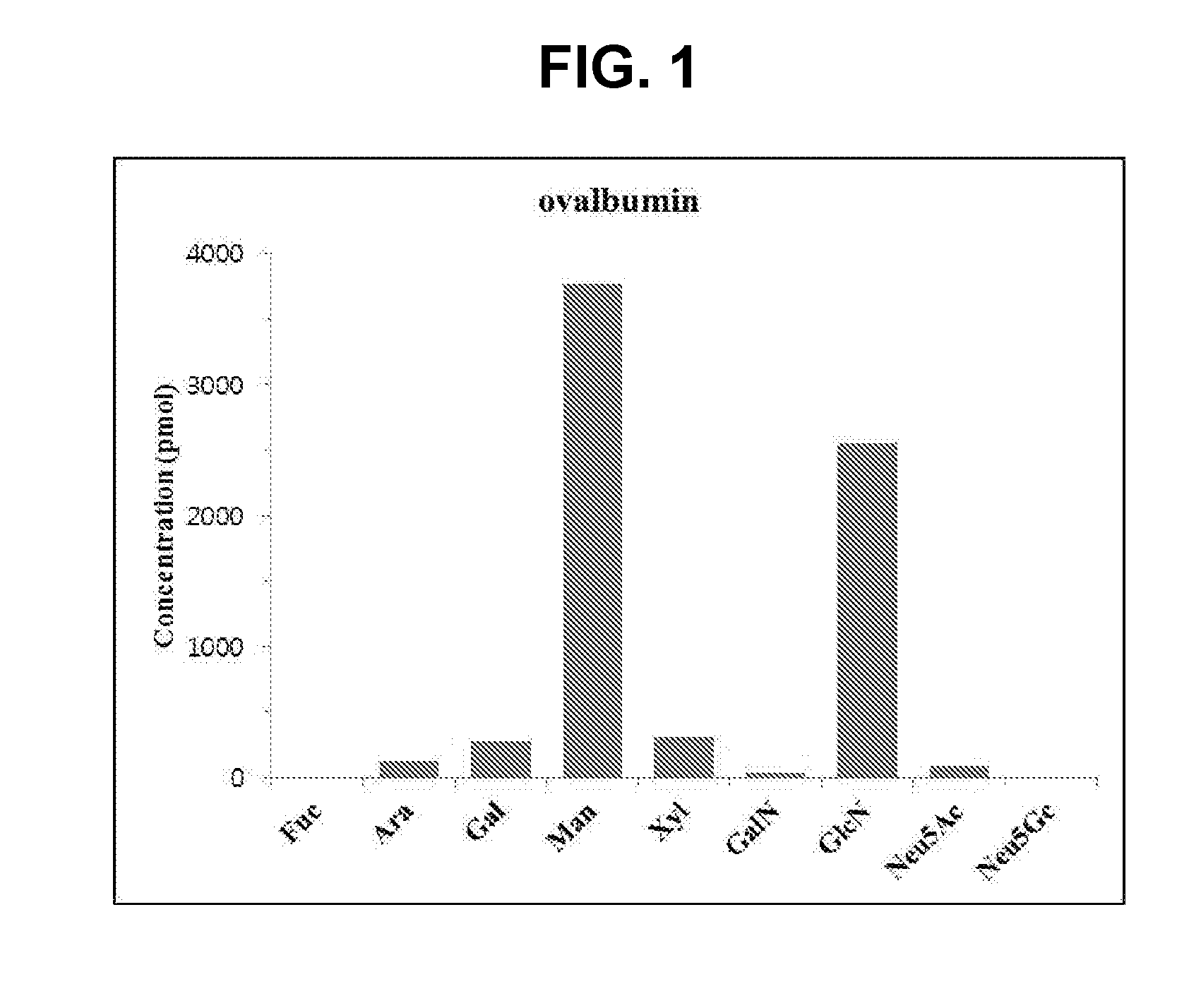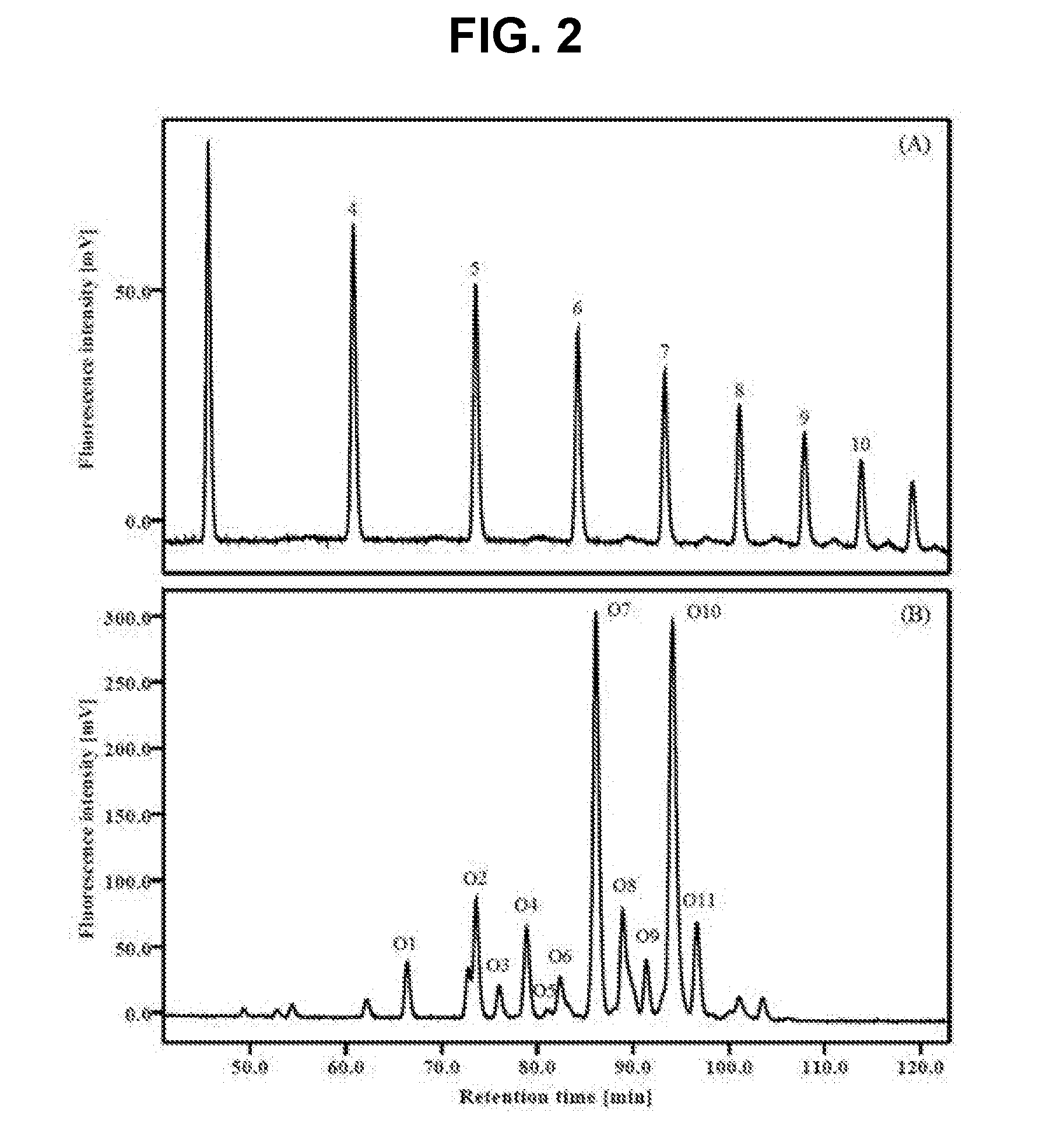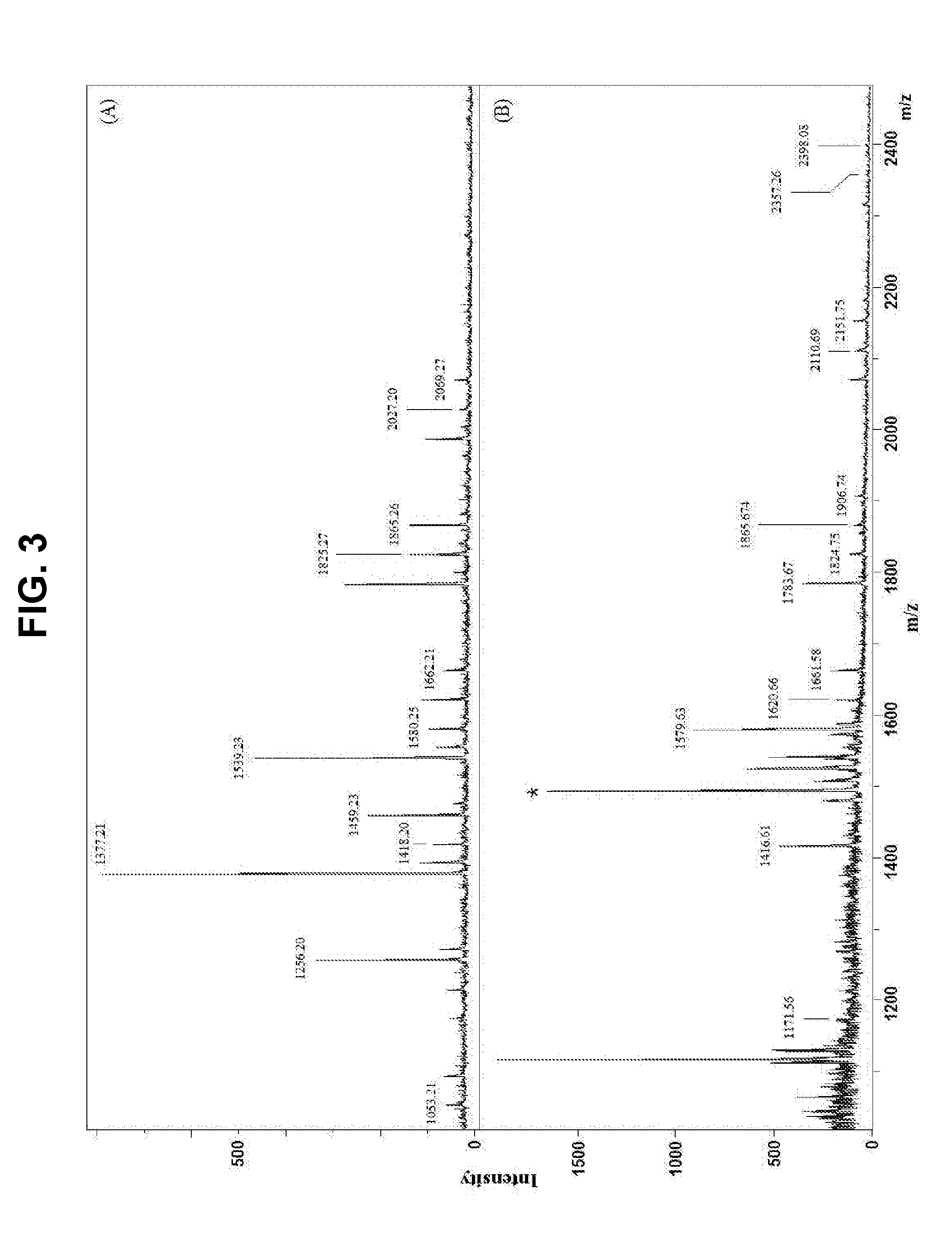Method for preparing low antigenic food and low antigenic food prepared by said method
ood technology, applied in the field of low antigenic food and a low antigenic food preparation method, can solve the problems of deterioration of functionality, food palatability, nutritional problems, etc., and achieve the effect of reducing the antigenicity of allergenic foods
- Summary
- Abstract
- Description
- Claims
- Application Information
AI Technical Summary
Benefits of technology
Problems solved by technology
Method used
Image
Examples
example 1
Analysis of Component Sugars of Ovalbumin (OVA)
[0091]4 N HCl was added to 1 mg OVA (Sigma-Aldrich, USA), followed by reaction at 100° C. for 4 hours. The sample cooled at room temperature was dried using Speed-vac, and the drying process was twice repeated using purified water. The sample was dissolved in 50 μL of purified water, and then analyzed by HPAEC-PAD (ICS-3000, Dionex, USA) using CarboPac PA1 (Dionex, USA) column with mobile phase A: 200 mM NaOH and B: D.W. at 0.5 mL / min for 80 minutes.
[0092]As a result of analyzing component sugars of OVA, it can be seen from FIG. 1 that mannose and N-acetylglucosamine are the largest proportion in OVA, while small amounts of xylose, galactose, and arabinose are present in OVA.
example 2
Analysis of Oligosaccharides of OVA
[0093] Separation of Oligosaccharides by Enzyme Treatment
[0094]1.5 mg of OVA was dissolved in 0.01 M Tris-HCl (pH 8.0), and then heated at 100° C. for 2 minutes for denaturation. 10 μL of trypsin (1 mg / mL, Milli Q water), 10 μL of chymotrypsin (1 mg / mL, Milli Q water), and 1 μL of 1 M CaCl2 were added, and then a reaction was conducted at 37° C. to make peptides, followed by drying. 30 μL of 0.5 M citrate-phosphate buffer (pH 5.0) was added to the dried sample, and 10 μL (1 mU / 100 μL) of glycoamidase A was added, and then a reaction was conducted at 37° C., to separate sugars from the peptides, followed by drying. 50 μL of 1 M Tris-HCl (pH 8.0) was added to the dried sample, and 10 of pronase (1 mg / mL, Milli Q water) was added, followed by reaction at 37° C., thereby hydrolyzing the peptides into amino acids.
[0095] Analysis of Oligosaccharides by 2-Aminobenzamide (2-AB) Labeling and HPLC
[0096]Only oligosaccharides were separated from the sample aft...
example 3
Modification of Glycan Structure of OVA
[0101] Modification of Glycan Structure of OVA by Exoglycosidase Treatment
[0102]For the modification of the structure of the glycan linked to OVA, exoglycosidase treatment was conducted. Specifically, mannosidase for mannose hydrolysis, galactosidase for galactose hydrolysis, and N-acetylglucosaminidase for GlcNAc hydrolysis were used. For the mannosidase reaction, 482 μL of 50 mM sodium acetate (pH 4.5) was added to 12 mg of OVA, and 2.5 U / 18 μL mannosidase was added, followed by overnight incubation at 37° C. For the galactosidase reaction, 497.5 μL of 25 mM sodium phosphate (pH 7.1) was added to 12 mg of OVA, and 2.5 U / 2.5 μL galactosidase was added, followed by overnight incubation at 37° C. For the N-acetylglucosaminidase reaction, 460 μL of 50 mM sodium acetate (pH 6.5) was added to 12 mg of OVA, and 2.5 U / 40 μL N-acetylglucosaminidase was added, followed by overnight incubation at 37° C. After the completion of each reaction, the enzyme ...
PUM
| Property | Measurement | Unit |
|---|---|---|
| pH | aaaaa | aaaaa |
| pH | aaaaa | aaaaa |
| pH | aaaaa | aaaaa |
Abstract
Description
Claims
Application Information
 Login to View More
Login to View More - R&D
- Intellectual Property
- Life Sciences
- Materials
- Tech Scout
- Unparalleled Data Quality
- Higher Quality Content
- 60% Fewer Hallucinations
Browse by: Latest US Patents, China's latest patents, Technical Efficacy Thesaurus, Application Domain, Technology Topic, Popular Technical Reports.
© 2025 PatSnap. All rights reserved.Legal|Privacy policy|Modern Slavery Act Transparency Statement|Sitemap|About US| Contact US: help@patsnap.com



